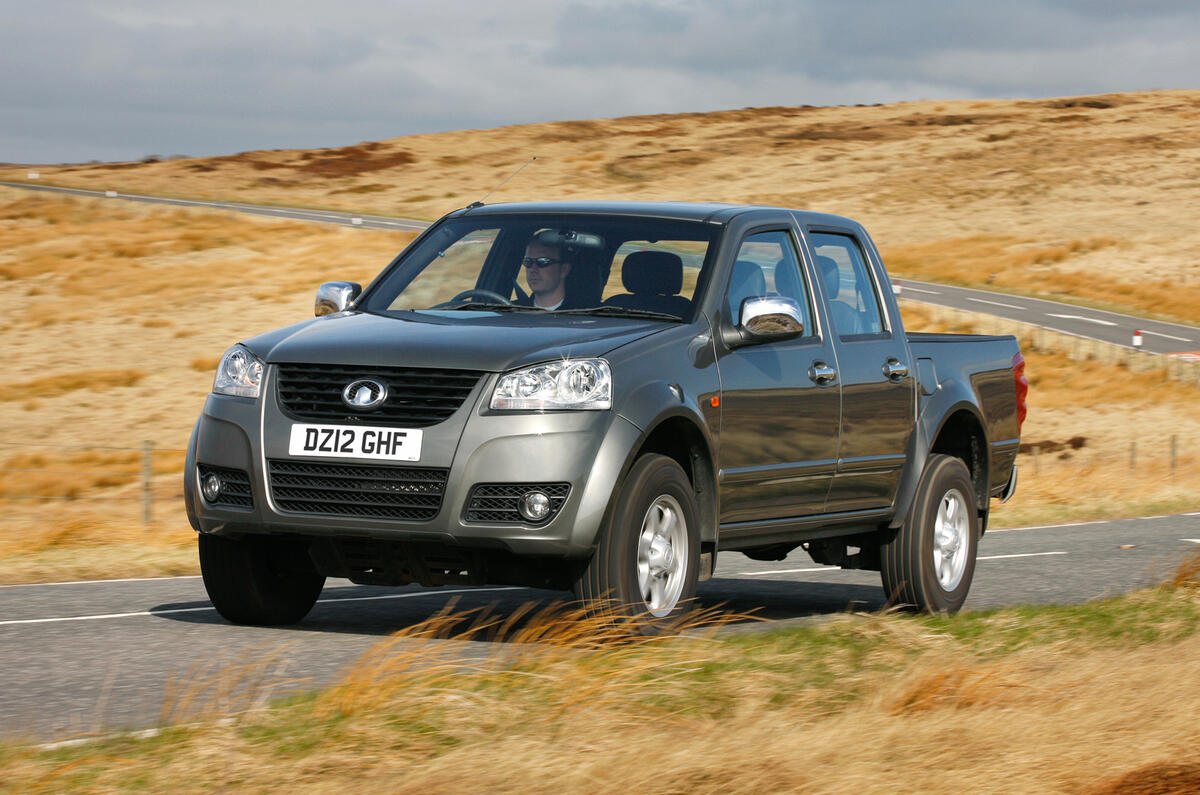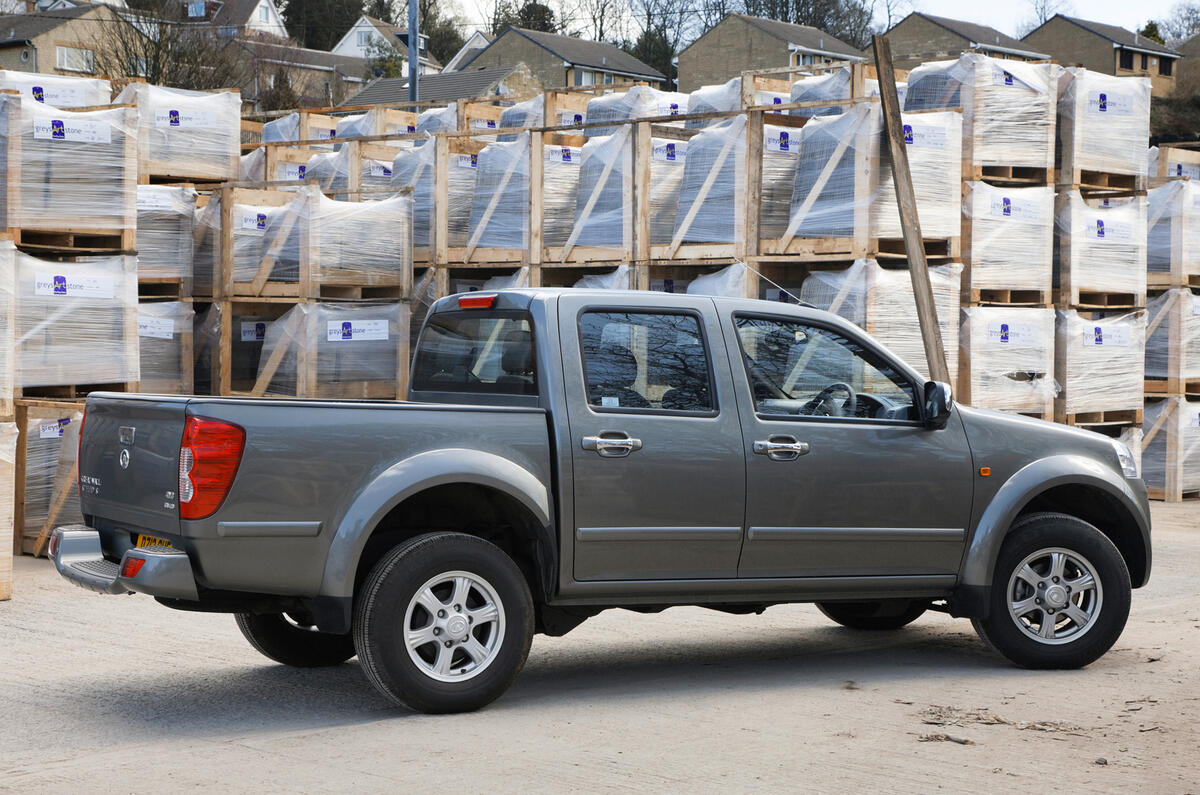The launch of the Great Wall Steed wasn't significant in itself, more what it represented. It was the first Chinese-branded vehicle to go on sale in the UK. It’s a four-door double-cab pick-up, and the first of many products due to be imported into this country.
With a pre-VAT price of less than £14,000 for the entry-level Steed S, it heavily plays the value card, and is the cheapest four-wheel-drive double-cab pick-up on sale today.
Rivals generally offer just two-wheel drive and a single-cab for the same money, together with meagre equipment. Instead, the Steed S features leather upholstery, heated front seats, alloy wheels, USB connectivity and air conditioning, while £2000 extra buys you the SE, which includes a hardtop, load liner, chrome side bars and parking sensors.
Its agricultural 141bhp 2.0-litre turbodiesel engine delivers more power than its rivals on paper, but on the road fails to feel any more alive, and is hindered by a slow-witted six-speed manual gearbox. Great Wall claims 34mpg on a combined cycle and CO2 emissions of 220g/km.
We weren’t able to test it either partially or fully laden, so couldn’t judge its suspension when under load, but drove it extensively off-road, which it did - as most four-wheel drives of its type do - with ease.
On the road, however, it proves nowhere near as competent or as sophisticated as its rivals, such as the Mitsubishi L200, Nissan Navara and Toyota Hilux. The Steed's steering is relatively imprecise and overly weighty, which coupled with an overly firm ride means it's a constant task to keep it headed in the right direction.















